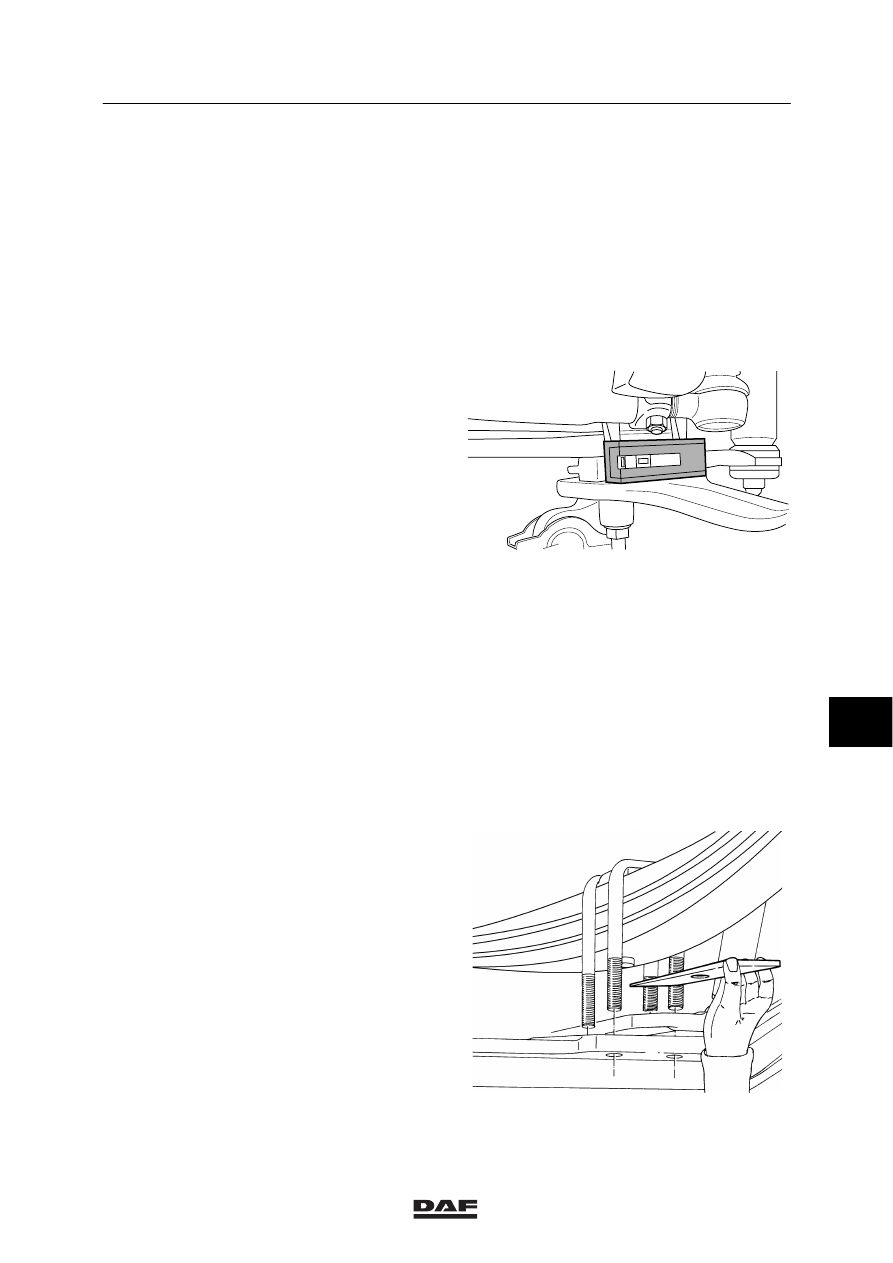DAF LF45, LF55 Series. Manual - part 542

7
LF45/55 series
Inspection and adjustment
FRONT AXLE, 152N
2-5
2.2 INSPECTION AND ADJUSTMENT OF CASTER
General
-
The vehicle must be on a level and
horizontal surface with the steering gear in
the “straight ahead” position.
-
The caster can be measured using an angle
gauge or wheel alignment equipment.
Checking caster using an angle gauge
1.
Clean the spot where the angle gauge is to
be placed on the spring seat.
2.
Place the angle gauge on a chassis side
member and check whether the chassis is
parallel with the floor.
If not, the caster reading should be adjusted
to the chassis position.
3.
Place the angle gauge on the spring seat
and measure the angle.
Compare the reading to the specified value,
see “Technical data”.
4.
Carry out the caster measurement at the
other end of the axle.
If different readings are obtained, check the
front axle suspension for deviations.
Checking caster using wheel alignment
equipment
1.
Use high quality wheel alignment equipment
for the inspection. The equipment must be
calibrated regularly and preferably be of the
type that can be calibrated before every
use.
2.
Follow the instructions for the wheel
alignment equipment carefully. Compare
the reading to the specified value, see
“Technical data”.
S7 00 560
Adjusting the caster
1.
Fit a key of the required thickness between
the spring seat and the spring. See
“Technical data” for the available keys.
2.
Repeat the measurement once the key has
been inserted.
S7 00 146
8
ᓻ 200322